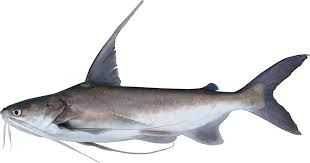Hardhead Sea Catfish

Species Details
Ariopsis Felis
Ariidae
Siluriformes
Inshore
1 - 12 lbs.
10" - 28"
What is a Hardhead Sea Catfish?
Hardhead sea catfish are a common species found in the coastal waters of the southern United States. They are a bottom-dwelling fish that can be caught using a variety of techniques, such as using cut bait or shrimp on a bottom rig or jigging with soft plastic lures. They are known for their hard, bony heads and spines.
Hardhead Sea Catfish (Ariopsis felis) Fish Description
Also known as Saltwater Catfish, or Hardhead, the Hardhead Sea Catfish is one of the four species under the Ariopsis genus; it is primarily associated with its relative, the Gafftopsail Catfish (Bagre marinus).
The Hardhead Sea Catfish’s body is elongated and scale-free. Its caudal fin is forker. Its underside is white but it is often dirty gray on top with green or blue tones at times. It has four barbels under its chin, and two more at the edges of its mouth. These barbels help the Hardhead Sea Catfish find its prey. It has dorsal and pectoral fins which are supported by a barbed spine that is sharp and covered in slime.
Diet and Size
As an opportunistic consumer, the Hardhead Sea Catfish feeds on shrimp, fish, crabs, polychaetes, gastropods, sea cucumbers, gastropods, cnidarians, seagrasses, and algae. The juvenile Hardhead Sea Catfish eats annelids, mollusks, and amphipods while the adult ones tend to eat larger fish.
Typically, Hardhead Sea Catfish measure up to 12 inches in length and around 3 pounds in weight. Some can weigh only one pound whereas some reach up to 12 pounds. Some Hardhead Sea Catfish can also measure up to 28 inches.
Interesting Facts About the Hardhead Sea Catfish
- The Hardhead Sea Catfish is named thus for having a hard and bony plate between the catfish’s eyes extending downward up to its dorsal fin.
- The Hardhead Sea Catfish’s fins contain mucus which have a mild toxin.
- A dead Hardhead Sea Catfish can still pose a serious threat when somebody steps on its erect pectoral or dorsal spine which can easily puncture even tennis shoes.
- Studies have shown that Hardhead Sea Catfish use echolocation, making it unique among other bony fishes. It uses low frequency sounds to avoid obstacles.
- Hardhead Sea Catfish produce sounds in three ways: one, by letting their bones and swim bladder make vibrations; two, by rubbing the pectoral girdle against their pectoral spines; and three, by grinding their teeth.
- The male Hardhead Sea Catfish practice mouthbrooding where they collect the eggs and keep them in their mouths until they hatch.
Hardhead Sea Catfish — Fishing Techniques
Since the Hardhead Sea Catfish is known to be a voracious feeder, it will bite any natural bait; the most effective for them, however, is shrimp. This catfish is known for being a notorious bait stealer.
Anglers consider the Hardhead Sea Catfish as an undesirable catch due to its “fishy” taste. Still, it is one of the 30 most commonly caught species by recreational anglers in the areas spanning the Indian River Lagoon in central Florida.
Anglers who target inshore fishes like the Sand Seatrout, Spotted Seatrout, and Red Drum also encounter the Hardhead Sea Catfish.
Commercially, this species of fish has been harvested using bottom trawls for industrial purposes.
Anglers are warned to handle the Hardhead Sea Catfish with care because its dorsal and pectoral spines may cause puncture wounds and aggravated by the serrations along the catfish's spines.
Habitat and Distribution
Hardhead Sea Catfish are found in the Gulf of Mexico. the northwest Atlantic Ocean, and the southeast coast of America, particularly around Florida Keys. They are also sighted in Massachusetts, Cape Cod, Chesapeake Bay region, and the Yucatan Peninsula.
They are mostly sighted in nearshore waters, river mouths with muddy or sandy bottoms, and estuaries with brackish waters. They are only occasionally seen in freshwater areas. During winter, Hardhead Sea Catfish tend to migrate from shallow to deeper waters.







